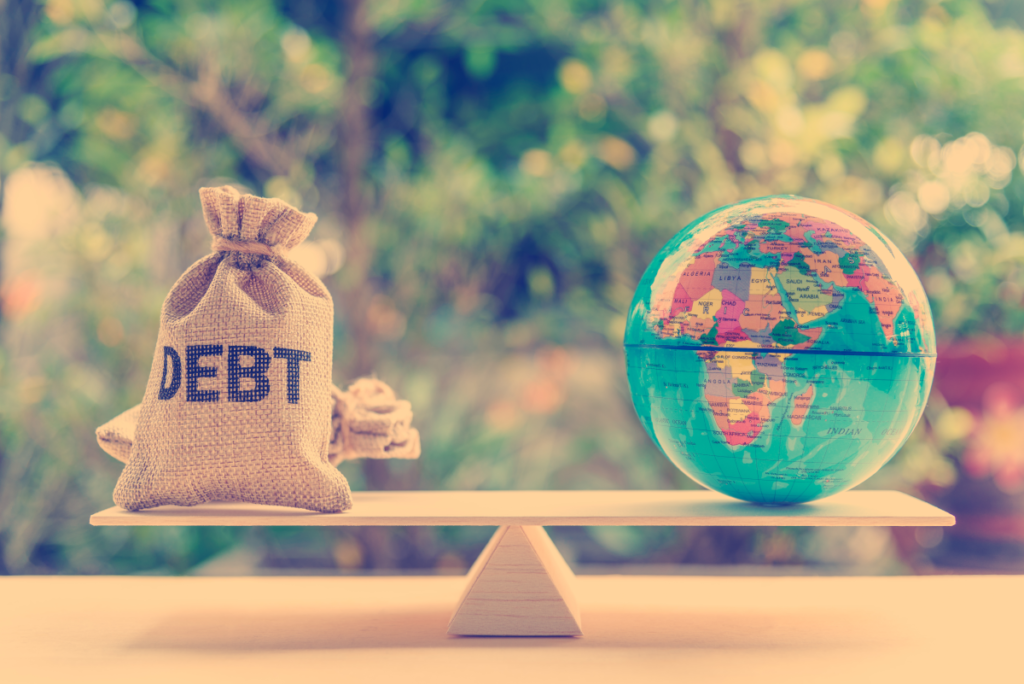- While bilateral debt represented 52 per cent in 2000, this declined to 25 per cent by 2021.
- Africa’s annual bond issuances rose from $10 billion in the early 2000s, to about $80 billion by 2016–2020.
- The share of China’s debt to Africa rose from just 1 per cent in the mid-2000s to 14 per cent by 2021.
The tightening of monetary policies in the US and Europe has had spillover effects on African markets. The challenging economic landscape has impacted interest rates and led to rising costs of debt servicing. As such, the African development bank has warned that Africa’s external debt could rise to $1.13 trillion this year from $1.1 trillion in 2022.
African Development Bank Group President, Akinwumi Adesina, said that with the tightening of monetary policies in the US and Europe has raised interest rates. Consequently, the costs of debt servicing Africa’s external debt have risen significantly. These combined effects have led to 25 countries in Africa falling either at risk of high debt distress or in debt distress.
“As a result, the external debt service payments due for 16 African countries will rise from $21.2 billion (Sh3 trillion) in 2022 to $22.3 billion (Sh3.1 trillion) in 2023,” said Akinwumi.
Also Read: Addressing Nigeria’s debt situation under President Bola Tinubu
Covid-19 and Monetary Policies
The growth in the continent’s loan obligations has been blamed on the spill-over effects of the Covid-19 pandemic on economies and their tightening fiscal space leading several countries to downgrade. The rising costs of energy and food prices from the Russian-Ukraine war and the rising costs of adapting to climate change compounded these challenges.
Akinwumi pointed out that the structure of Africa’s external debt has changed dramatically in the past decade or more, accentuating a trend that started in the mid-2000s. According to AFDB, in recent times non-Paris Club bilateral and commercial creditors have increasingly become major sources of Africa’s sovereign debt.
While bilateral debt represented 52 per cent in 2000, this declined to 25 per cent by 2021. Contrastively, Africa’s commercial debt share of total debt increased from 17 per cent in 2000 to 43 per cent in 2021.
Africa’s annual bond issuances rose from $10 billion in the early 2000s, to about $80 billion by 2016–2020. This trend was spurred by the very low global interest rates, with investors looking for yields in emerging markets.
Also Read: China’s crucial role in Africa’s external debt restructuring arrangements
The Chinese Factor on Africa’s external debt
The Chinese share of Africa’s external debt has rapidly grown. The share of China’s debt to Africa rose from just 1 per cent in the mid-2000s to 14 per cent by 2021. Infrastructure accounts for the largest share of China’s debt to Africa.
Moreover, average interest rates on debt have diverged significantly over time. Multilateral debt stands at 1 per cent with bilateral debt at 1.2 per cent. Private debt is greater than 6.2 per cent. The tenure on the debt has also widened between creditors.
“While the maturity of official debt was 30 years (for 62 percent of the debt), the tenor for bonds have averaged 10 years. Thus, we now have a more shorter-term debt with higher interest rates,” added Akinwumi.
An increasing percentage of debt is now in the form of resource-backed loans. Between 2004 and 2018 30 African countries signed natural resource-backed loans worth $66 billion. Oil, minerals, and commodities guaranteed most of the loans. Moreover, the commodity price crash of 2014 threw 10 out of the 14 countries that used natural resource-backed loans into serious debt problems.
Africa’s external debt rankings
Kenya ranks third among African countries in terms of government debt to gross domestic product (GDP). According to the World of Statistics, Kenya’s debt-to-GDP ratio is 67.3 per cent. Eritrea ranks first among the most indebted African countries with 164 per cent. Moreover, according to data from the Central Bank of Kenya (CBK), public debt reached $73 billion in December. This debt consists of $36 billion in domestic debt, $303 million in publicly-guaranteed debt, and $37 billion) in external debt.
South Africa ranks second among African countries, with 67.4 per cent. Nigeria ranks fourth with 38 per cent, with the four countries being the only ones to make the list. On the other hand, the Democratic Republic of the Congo has the lowest government debt-to-GDP ratio in Africa, at 15.2 per cent. Burundi follows closely at 15.9 per cent and Botswana at 18.2 per cent.
